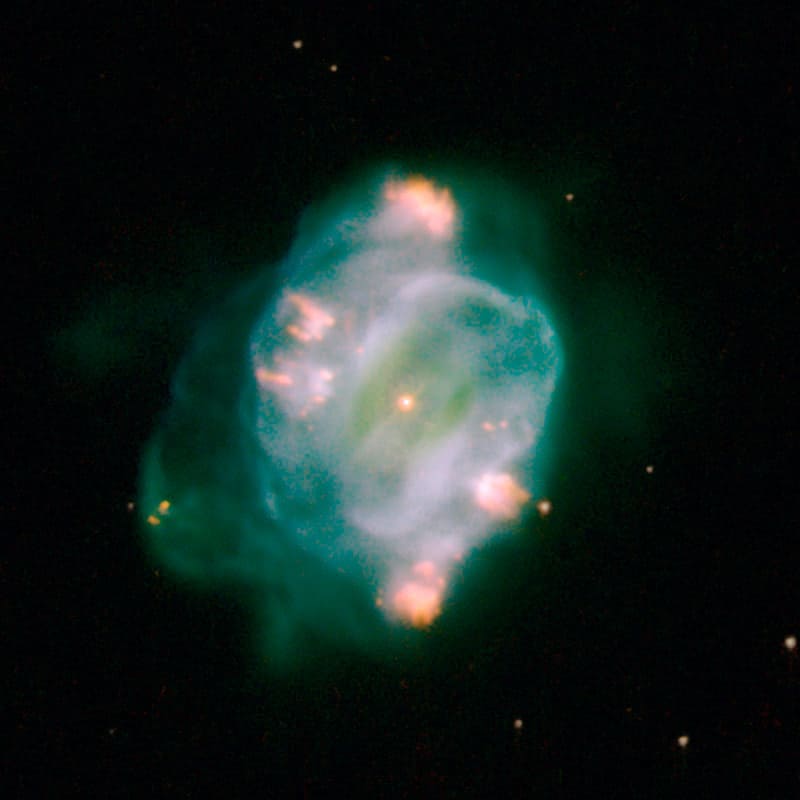Blog
Herman Riley (August 31, 1933 – April 14, 2007) was a jazz saxophonist who spent most of his life as a studio musician in Los Angeles. He worked with Gene Ammons, Lorez Alexandria, Count Basie, Bobby Bryant, Donald Byrd, Benny Carter, Quincy Jones, Shelly Manne, Blue Mitchell, and Joe Williams.
more...Paul Winter (born August 31, 1939) is an American saxophonist who founded the Paul Winter Consort. He has recorded more than 40 albums and won seven Grammy Awards. He has toured and recorded in 52 countries and six continents. He often records while traveling in wilderness areas, including on rafts, mules, dog sleds, horses, kayaks, sailboats, steamers, tug-boats, and Land Rovers. He performs benefit concerts for environmental and world peace organizations. Paul Winter attended Altoona Area High School and graduated in 1957. In 1961, while he was in college at Northwestern University, the band that he founded, the Paul Winter Sextet won the Intercollegiate Jazz Festival and was signed by Columbia Records. The next year, the band toured Latin America as cultural ambassadors for the United States State Department, playing 160 concerts in 23 countries. The Sextet was also the first jazz band to perform at the White House. Winter returned to Brazil in the mid-1960s and his interest in Brazilian music and the emerging bossa nova led to the 1965 release of the album Rio, with liner notes by Vinicius de Moraes.
After Winter’s band changed its name to the Paul Winter Consort in the late 1960s, it contributed to the development of world music and space music. The Consort’s 1972 release, Icarus, was produced by George Martin. Most of the musicians who worked on this album went on to form the jazz group Oregon. The Consort has continued over the years with different musicians.
In 1975, Winter sailed aboard the Greenpeace V anti-whaling expedition for three days of playing saxophone to wild gray whales off the coast of Vancouver Island (Tofino). He was accompanied in this effort by Melville Gregory and Will Jackson, musicians attempting to “communicate” with the whales using various instruments and a Serge synthesizer. Photos of Winter and the whales [by Rex Weyler] appeared on wire services and in media around the world, helping the ultimate success of the mission against Soviet whalers. In 1978 Winter released “Common Ground” an album that combined his music and animal sounds (Wolves, Eagles, Whales) and ushered in what became known as “New Age” music.
more...Cameroon
more...Also known as the Lobster Nebula and the War and Peace Nebula, NGC 6357 is a diffuse nebula. It is located in the constellation Scorpius, approximately 5,500 light-years away. NGC 6357 is actually a ‘cluster of clusters,’ containing at least three clusters of young stars, including many hot, massive, luminous stars. Astronomers call NGC 6357 and other objects like it ‘HII’ regions. An HII region is created when the radiation from hot, young stars strips away the electrons from neutral hydrogen atoms in the surrounding gas to form clouds of ionized hydrogen. The X-rays from NASA’s Chandra space telescope reveal hundreds of point sources, which are the young stars in NGC 6357, as well as diffuse X-ray emission from hot gas. There are bubbles, or cavities, that have been created by radiation and material blowing away from the surfaces of massive stars, plus supernova explosions.
more...John Edmund Andrew Phillips (August 30, 1935 – March 18, 2001) was an American singer, guitarist, songwriter, and promoter of the 1967 Monterey Pop Festival. Phillips was a member and leader of the vocal group The Mamas & the Papas.
Phillips was born August 30, 1935 in Parris Island, South Carolina. His father, Claude Andrew Phillips, was a retired United States Marine Corpsofficer. Claude Phillips, while on his way home from France following World War I, managed, in a poker game, to win a tavern business located in Oklahoma from another Marine. His mother, Edna Gertrude (née Gaines), who had English ancestry, met his father in Oklahoma. According to his autobiography, Papa John, Phillips’ father was a heavy drinker who suffered from poor health.
Phillips was the primary songwriter and musical arranger of The Mamas & the Papas. In a 1968 interview, Phillips described some of his arrangements as “well arranged two-part harmony moving in opposite directions”. After being signed to Dunhill, they had several Billboard Top Ten hits, including “California Dreamin’“, “Monday, Monday“, “I Saw Her Again“, “Creeque Alley“, and “12:30 (Young Girls Are Coming to the Canyon)“. John Phillips also wrote “San Francisco (Be Sure to Wear Flowers in Your Hair)” in 1967 for former Journeymen bandmate Scott McKenzie. “San Francisco” is widely regarded as emblematic of 1960s American counterculture music. Phillips wrote the oft-covered “Me and My Uncle“, which was a favorite in the repertoire of the Grateful Dead.
Phillips helped promote and performed with The Mamas & the Papas in the Monterey International Pop Music Festival held June 16 to 18, 1967 in Monterey, California. The festival was planned in just seven weeks and was developed as a way to validate rock music as an art form in the way jazz and folk were regarded. It was the first major pop-rock music event in history.
more...McKinley Howard “Kenny” Dorham (August 30, 1924 – December 5, 1972) was an American jazz trumpeter, singer, and composer. Dorham’s talent is frequently lauded by critics and other musicians, but he never received the kind of attention or public recognition from the jazz establishment that many of his peers did. For this reason, writer Gary Giddins said that Dorham’s name has become “virtually synonymous with underrated.”[1]Dorham composed the jazz standard “Blue Bossa“, which first appeared on Joe Henderson‘s album Page One.
Dorham was one of the most active bebop trumpeters. He played in the big bands of Lionel Hampton, Billy Eckstine, Dizzy Gillespie, and Mercer Ellington and the quintet of Charlie Parker. He joined Parker’s band in December 1948.[2] He was a charter member of the original cooperative Jazz Messengers. He also recorded as a sideman with Thelonious Monk and Sonny Rollins, and he replaced Clifford Brown in the Max Roach Quintet after Brown’s death in 1956. In addition to sideman work, Dorham led his own groups, including the Jazz Prophets (formed shortly after Art Blakeytook over the Jazz Messengers name). The Jazz Prophets, featuring a young Bobby Timmons on piano, bassist Sam Jones, and tenorman J. R. Monterose, with guest Kenny Burrell on guitar, recorded a live album ‘Round About Midnight at the Cafe Bohemia in 1956 for Blue Note.
In 1963 Dorham added the 26-year-old tenor saxophonist Joe Henderson to his group, which later recorded Una Mas (the group also featured a young Tony Williams). The friendship between the two musicians led to a number of other albums, such as Henderson’s Page One, Our Thing and In ‘n Out. Dorham recorded frequently throughout the 1960s for Blue Note and Prestige Records, as leader and as sideman for Henderson, Jackie McLean, Cedar Walton, Andrew Hill, Milt Jackson and others.
https://www.youtube.com/watch?v=PdQ6kFl59rM
more...born 8-30-1922 died May-9-1982
Brown when, at age five, she sang at a sanctified temple in St. Louis. By then her family, including a mother who played ragtime piano, had relocated to Detroit. Her professional debut was in Motor City clubs in the early ’40s, and within several years she had relocated west to the Windy City. Brown maintained an axis of gigging most of her career between Chicago, Detroit, and St. Louis. Because of both being born and dying in the latter city, it is there that her name is often listed as a native talent, following Helen Brown alphabetically. Her connection with Chicago is just as strong, however, and includes the required connections with talent such as the Todd Rhodes Orchestra, Earl Bostic, Cecil Gant, Tiny Bradshaw, Gene Ammons, and even the young soul singer Jackie Wilson.
In the mid-’60s she recorded for the Spivey label, a typical mishmash organized by label maestro Victoria Spivey, which allows listeners to sample the color contrast between guest star Muddy Watersand Olive Brown, a brown-in that might be followed nicely with the album Raw Sienna by Savoy Brown. In this same period, Brown began nearly a decade living in Canada, but this was hardly an exile from music. The roster at a Colonial Tavern date recorded by the CBC in Toronto promises great things, featuring Brown as vocalist with a band including the marvelous trumpeter Buck Clayton, stalwart pianist Sir Charles Thompson, and basso profundo Tommy Potter. Like many of the radio network’s live recordings, this ’60s session has never been issued on disc.
more...Flamenco Fridays with Tango.
In flamenco a tango (Spanish pronunciation: [ˈtaŋɡo]) is one of the flamenco palos closely related in form and feeling to the rumba flamenca. It is often performed as a finale to a flamenco tiento. Its compás and llamada are the same as that of the farruca and share the farruca’s lively nature. However, the tango is normally performed in the A Phrygian mode. In some English sources the flamenco tango is written with an -s; “the tangos is…”
The flamenco tango is distinct from the flamenco rumba primarily through the guitar playing. In Rumba the guitar flows more freely, whereas in Tangos the accents on beats 2, 3 & 4 are marked clearly with heavy strumming.
Tangos is only vaguely related to Argentine tango, and objectively they only share compás binario or double stroke rhythm. The fact that Argentine tango is one of the first couple dances in America has led historians to believe that both could be based in a minuet-style European dance, therefore sharing a common ancestor, while those who compare the present day forms do not see them as related.
more...NGC 5307 is located 10,551 light-years from Earth in the southern hemisphere constellation of Centaurus.Also known as ESO 221-11 or Hen 2-98, this planetary nebula was discovered by the English astronomer John Herschel on April 15, 1836.“Planetary nebulae like NGC 5307 are the final stage of a Sun-like star,” Hubble astronomers said.“As such, these objects allow us a glimpse into the future of our own Solar System.”“A star like our Sun will, at the end of its life, transform into a red giant.”Stars are sustained by the nuclear fusion that occurs in their core, which creates energy.This process constantly tries to rip the star apart. Only the gravity of the star prevents this from happening.“At the end of the red giant phase of a star, these forces become unbalanced,” the researchers explained.“Without enough energy created by fusion, the core of the star collapses in on itself, while the surface layers are ejected outward.”“After that, all that remains of the star is what we see here: glowing outer layers surrounding a white dwarf star, the remnants of the red giant star’s core.”“This isn’t the end of this star’s evolution though — those outer layers are still moving and cooling.”
more...Michael Joseph Jackson (August 29, 1958 – June 25, 2009 Gary, IN) was an American singer, songwriter, and dancer. Dubbed the “King of Pop“, he is regarded as one of the most significant cultural figures of the 20th century and one of the greatest entertainers. Jackson’s contributions to music, dance, and fashion, along with his publicized personal life, made him a global figure in popular culture for over four decades.
The eighth child of the Jackson family, Michael made his professional debut in 1964 with his elder brothers Jackie, Tito, Jermaine, and Marlon as a member of the Jackson 5. He began his solo career in 1971 while at Motown Records, and in the early 1980s, became a dominant figure in popular music. His music videos, including those for “Beat It“, “Billie Jean“, and “Thriller” from his 1982 album Thriller, are credited with breaking racial barriersand transforming the medium into an art form and promotional tool. Their popularity helped bring the television channel MTV to fame. Bad (1987) was the first album to produce five US Billboard Hot 100 number-one singles. He continued to innovate throughout the 1990s with videos such as “Black or White” and “Scream“, and forged a reputation as a touring artist. Through stage and video performances, Jackson popularized complicated dance techniques such as the robot and the moonwalk, to which he gave the name. His sound and style have influenced artists of various genres.
Jackson is one of the best-selling music artists of all time, with estimated sales of over 350 million records worldwide; Thriller is the best-selling album of all time, with estimated sales of 66 million copies worldwide. His other albums, including Off the Wall (1979), Bad (1987), Dangerous (1991), and HIStory (1995), also rank among the world’s best-selling. He won hundreds of awards (more than any other artist in the history of popular music), has been inducted into the Rock and Roll Hall of Fame twice, and is the only pop or rock artist to have been inducted into the Dance Hall of Fame. His other achievements include Guinness world records (including the Most Successful Entertainer of All Time), 15 Grammy Awards (including the Legendand Lifetime Achievement awards), 26 American Music Awards (more than any other artist), and 13 number-one US singles (more than any other male artist in the Hot 100 era). Jackson was the first artist to have a top ten single in the Billboard Hot 100 in five different decades. In 2016, his estate earned $825 million, the highest yearly amount for a celebrity ever recorded by Forbes.
In the late 1980s, Jackson became a figure of controversy for his changing appearance, relationships, behavior and lifestyle. In 1993, he was accused of sexually abusing the child of a family friend. The accusation was settled out of court. In 2005, he was tried and acquitted of further child sexual abuse allegations and several other charges. In 2009, while preparing for a series of comeback concerts, This Is It, Jackson died from an overdose of sedatives administered by his personal physician, Conrad Murray. Jackson’s fans around the world expressed their grief, and his public memorial service was broadcast live. The 2019 documentary Leaving Neverland detailed renewed child sexual abuse allegations and led to an international backlash against Jackson.
more...Bennie Maupin (born August 29, 1940, Detroit, Michigan) is a jazz multireedist who performs on various saxophones, flute, and bass clarinet.
He is known for his participation in Herbie Hancock‘s Mwandishi sextet and Headhunters band, and for performing on Miles Davis‘s seminal fusionrecord, Bitches Brew. Maupin has collaborated with Horace Silver, Roy Haynes, Woody Shaw, Lee Morgan and many others. He has performed on several Meat Beat Manifesto albums. He is noted for having a harmonically-advanced, “out” improvisation style, while having a different sense of melodic direction than other “out” jazz musicians such as Eric Dolphy.
Maupin was a member of Almanac, a group with Cecil McBee (bass), Mike Nock (piano) and Eddie Marshall (drums).
more...Charles Parker Jr. (August 29, 1920 – March 12, 1955), also known as Yardbird and Bird, was an American jazz saxophonist and composer.Parker was a highly influential jazz soloist and a leading figure in the development of bebop, a form of jazz characterized by fast tempos, virtuosic technique and advanced harmonies. Parker was a blazingly fast virtuoso, and he introduced revolutionary harmonic ideas including rapid passing chords, new variants of altered chords, and chord substitutions. His tone ranged from clean and penetrating to sweet and somber. Parker acquired the nickname “Yardbird” early in his career on the road with Jay McShann. This, and the shortened form “Bird”, continued to be used for the rest of his life, inspiring the titles of a number of Parker compositions, such as “Yardbird Suite“, “Ornithology“, “Bird Gets the Worm”, and “Bird of Paradise”. Parker was an icon for the hipster subculture and later the Beat Generation, personifying the jazz musician as an uncompromising artist and intellectual rather than just an entertainer.
Charles Parker Jr. was born in Kansas City, Kansas at 852 Freeman Avenue, and raised in Kansas City, Missouri near Westport and later – in high school – near 15th and Olive Street. He was the only child of Charles Parker and Adelaide “Addie” Bailey, who was of mixed Choctaw and African American background. He attended Lincoln High School in September 1934, but withdrew in December 1935, just before joining the local musicians’ union and to pursue his musical career full-time. His childhood sweetheart and future wife, Rebecca Ruffin, graduated from Lincoln High School in June 1935.
According to an interview Parker gave in the 1950s, one night in 1939 he was playing “Cherokee” in a jam session with guitarist William “Biddy” Fleet when he hit upon a method for developing his solos that enabled one of his main musical innovations. He realized that the 12 semitones of the chromatic scalecan lead melodically to any key, breaking some of the confines of simpler jazz soloing.
There are three basic bebop scales used by Charlie Parker. The Mixolydian (dominant seventh) bebop scale can be used primarily against dominant seventh chords. The Dorian bebop scale is used primarily against minor seventh chords. The Major bebop scale is used primarily against major sixth and major seventh chords. Each of these bebop scales is a nine-note scale rather than the typical eight-note scale. Charlie Parker was a primary influence on the approaches of guitarist Grant Green.
Early in its development, this new type of jazz was rejected by many of the established, traditional jazz musicians who disdained their younger counterparts. The beboppers responded by calling these traditionalists “moldy figs“. However, some musicians, such as Coleman Hawkins and Tatum, were more positive about its development, and participated in jam sessions and recording dates in the new approach with its adherents.
Because of the two-year Musicians’ Union ban of all commercial recordings from 1942 to 1944, much of bebop’s early development was not captured for posterity. As a result, it gained limited radio exposure. Bebop musicians had a difficult time gaining widespread recognition. It was not until 1945, when the recording ban was lifted, that Parker’s collaborations with Dizzy Gillespie, Max Roach, Bud Powell and others had a substantial effect on the jazz world. (One of their first small-group performances together was rediscovered and issued in 2005: a concert in New York’s Town Hall on June 22, 1945.) Bebop soon gained wider appeal among musicians and fans alike.
more...My daughter Maya was born on the banks of the Mississippi River. The same year the Twins won the World Series. I was performing with the Maroons at St Anthony Main and I put down the bass and Stephen Scott took my position while I went home to see my new baby then scooted back to the Maroons and got in hot water lol. Happy Birthday beautiful girl and wonderful mom and loving wife.
more...Image data from the Hubble Space Telescope, the European Southern Observatory, and small telescopes on planet Earth are combined in this magnificent portrait of face-on spiral galaxy Messier 61 (M61). A mere 55 million light-years away in the Virgo Cluster of Galaxies, M61 is also known as NGC 4303. It’s considered to be an example of a barred spiral galaxy similar to our own Milky Way. Like other spiral galaxies, M61 also features sweeping spiral arms, cosmic dust lanes, pinkish star forming regions, and young blue star clusters. The bright galactic core is offset to the left in this 50 thousand light-year wide close-up.
more...Philip William Seamen (28 August 1926 – 13 October 1972, Lambeth) was an English jazz drummer.
With a background in big band music, Seamen played and recorded in a wide range of musical contexts with virtually every key figure of 1950s and 1960s British jazz. Notable examples included Joe Harriott, Tubby Hayes, Stan Tracey, Ronnie Scott, Dick Morrissey, Harold McNair, Don Rendell, Victor Feldman, Dizzy Reece, Tony Coe, Tony Lee, and George Chisholm, among others. Later in his career he worked with Alexis Korner and Georgie Fame, and had a spell with Ginger Baker’s Air Force, the leader of the band being Seamen’s foremost disciple. Addiction to alcohol and other drugs hampered his career.
Seamen began playing drums at the age of six, turning professional at the age of 18 by joining Nat Gonella and his Georgians in 1944. He joined the Tommy Sampson Orchestra in 1948, and by 1949, Seamen and tenor saxist Danny Moss had formed a bebop quintet from within the ranks and which was featured on a radio broadcast by the orchestra in September 1949.
He then went on to play in the Joe Loss Orchestra for about 14 months, the most popular dance band of the time. Then the top job with Jack Parnell from 1951 until midway ’54, from 12 to 17-piece band. Seamen was much sought after during the 50s, also playing in Kenny Graham‘s Afro-Cubists projects from 1952 to ’58, from 1954 onwards with the Joe Harriott Quartet, the Ronnie ScottOrchestra and Sextet, and an ever extending list including Dizzy Reece, Victor Feldman, Jimmy Deuchar, Kenny Baker, Vic Ash, Don Rendell, Stan Tracey, Laurie Johnson, as well as blues stars Big Bill Broonzy and Josh White, countless sessions.
more...Kenneth Sidney “Kenny” Drew (August 28, 1928 – August 4, 1993) was an American jazz pianist.
Drew was one of several American jazz musicians who settled in Europe around this period: he moved to Paris in 1961 and to Copenhagen three years later. While he sacrificed much of the interest of the American jazz audience, he gained a wide following across Europe. Kenny Drew was a well-known figure on the Copenhagen jazz scene, recording many sessions with the Danish bassist Niels-Henning Ørsted Pedersen. “Living in Copenhagen, and travelling out from there,” Drew remarked, “I have probably worked in more different contexts than if I had stayed in New York where I might have got musically locked in with a set-group of musicians. This way, I have been able to keep my musical antennas in shape, while at the same time I have had more time to study and also get deeper into my own endeavors.
more...Ustad Vilayat Khan (28 August 1928 – 13 March 2004) was an Indian classical sitar player. Along with Imdad Khan, Enayat Khan, and Imrat Khan, he is credited with the creation and development of gayaki ang (an attempt to mimic vocal music) on the sitar. He recorded his first 78-RPM disc at the age of 8, and gave his last concert in 2004 at the age of 75.
Vilayat was born in Gouripur, Mymensingh in then East Bengal in British India and current Bangladesh. His father Enayat Khan was recognised as a leading sitar and surbahar (bass sitar) player of his time, as had been his grandfather, Imdad Khan, before him. He was taught in the family style, known as the Imdadkhani gharana or Etawah Gharana, after a small city close to Agra where Imdad Khan lived.
more...


